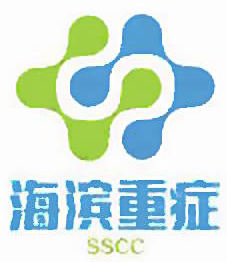 Can the Cerebral Regional Oxygen Saturation Be a Perfusion Parameter in Shock
Can the Cerebral Regional Oxygen Saturation Be a Perfusion Parameter in Shock
Can the Cerebral Regional Oxygen Saturation Be a Perfusion Parameter in Shock?
# 休克时局部脑氧饱和度能作为关注指标吗?
中文
引言:
目的:
方法:
结果:
结论:
Al Tayar, Abouelela 和 Mohiuddeen,
INTRODUCTION: Shock, defined as a state of tissue hypoperfusion and the tissues reperfusion, is the main goal of management of shock. Increase in central venous saturation (CvSo2) and decrease in blood lactate level are useful in assessment of adequacy of tissue perfusion. Near-infrared spectroscopy is a noninvasive way to observe real-time changes in regional cerebral saturation and has been used in patients with different brain diseases. There is a small body of literature suggesting that cerebral regional oxygen saturation (CrSo2) monitoring added a value in assessment and management of intensive care unit (ICU) patients. OBJECTIVES: The aim of this study was to determine if CrSo2 can be used as an indicator of tissue perfusion in ICU patients with shock, and to determine the prognostic value of CrSo2 in survival prediction. METHODS: This is a prospective single-center pilot study entailed 20 patients who were diagnosed with shock admitted to adult ICU at King Fahd Military Medical Complex, Dhahran, Saudi Arabia. The CrSo2 was monitored with near-infrared spectroscopy using Somatic, INVOS Oximeter 5100C (Covidien, Mansfield, Mass) with bilateral frontal electrode and mean value of the 2 readings was taken as well as blood lactate level, CvSo2, mean arterial blood pressure, and cardiac index at baseline time, 8, 24, 48, and 72 hours. All patients with history of cerebrovascular diseases and those who presented with neurological deficits were excluded from the study. RESULTS: Significant negative correlation was noticed between CrSo2 and lactic acid at 8, 24, 48, and 72 hours from admission (r=-0.625, -0.711, -0.745, and -0.722, respectively; P=.003, .001, .001, and .001, respectively). Significant positive correlation was noticed between CrSo2 and CvSo2 at 8, 24, 48, and 72 hours from admission (r=0.572, 0.674, 0.527, and 0.757; P=.008, .001, .017, and .001, respectively). In addition, significant positive correlation was found between CrSo2 and mean arterial pressure at 24, 48, and 72 hours from admission (r=0.523, 0.513, and 0.626, respectively; P=.018, .021, and .003, respectively). Significant difference was also detected between the value of CrSo2 in the survivors (12 patients) and the nonsurvivors (8 patients) after 72 hours from admission, as it was 52.58%±7.33% and 44.75%±9.44% (P=.049), whereas it was not significantly different in the first 3 days. CONCLUSIONS: Cerebral regional oxygen saturation might be helpful as one of the perfusion parameters in patients with shock and it could have a prognostic value in mortality prediction. However, further studies with larger sample size are still needed to validate these results.
